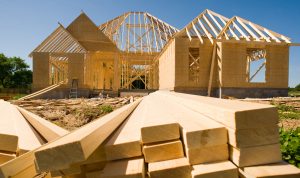It’s a nightmare no homeowner wants to deal with — having mold in your home not only creates unpleasant odors, but it also presents a health risk for the inhabitants. The latter can be a huge problem if an allergic individual happens to be living in your home. And it doesn’t stop there; besides paying for mold removal, you might also have to foot additional costs in restoring your home’s structural integrity and aesthetic appeal. Which begs the question, is it really possible to build a mold-resistant house?
home not only creates unpleasant odors, but it also presents a health risk for the inhabitants. The latter can be a huge problem if an allergic individual happens to be living in your home. And it doesn’t stop there; besides paying for mold removal, you might also have to foot additional costs in restoring your home’s structural integrity and aesthetic appeal. Which begs the question, is it really possible to build a mold-resistant house?
Mold is Everywhere
This is no hyperbole — also known as mildew in its early stages of growth, mold can be described as tiny living organisms that fall within the fungi kingdom, the same category where you’ll find yeasts and mushrooms. Like most other living things, the species has its own designated role within the natural ecosystem. As such, mold spores will always be present in the atmosphere, and there are certain conditions that provide the perfect environment for them to start growing.
Warmth
Mold tends to thrive in a relatively warm environment, particularly in places where temperatures range between 40 and 100 degrees Fahrenheit. This also happens to be the ideal comfortable range for human beings, which explains why a large number of homes are affected by mold growth. It’s also the reason why buildings that are kept cooler experience less mold growth.
Humidity and Moisture
Whether it’s from a leaking faucet, steam from showers and sinks, or vapors from cooking oil, moisture provides the perfect conditions for mold spores to take root and grow quickly. Now combine this with the fact that humidity tends to rise in proportion to temperature, and it’s easy to see why bathrooms and kitchens are highly affected. It’s worth noting that humidity and moisture levels are directly linked, which translates to exponential growth in warm, humid areas.
Darkness and Poor Ventilation
Mold cannot grow under ultraviolet light; what it prefers instead is a dark environment, which is why it tends to go unnoticed till it’s too late. Besides, an indoor area that doesn’t get much light is also likely to be poorly ventilated. In addition to promoting humidity, stagnant air also encourages growth in the sense that mold spores are able to stay in one place long enough to take root.
Food Source
This is by far the biggest headache homeowners face when it comes to mold removal. You see, this species feeds on organic matter, which includes just about every construction material you can imagine. In other words, food will never be much of a problem for molds growing indoors, which makes it that much harder to eliminate them completely.
Basically, the difference between whether or not mold will grow in your house all comes down to how well you control these factors. So, how do you go about it?
Mold Prevention Begins at the Construction Phase
Although mold is everywhere, it’s still possible to change the equation that determines their likelihood of growing in your favor. This means taking steps to make your house mold resistant, including:
-Proper site selection: Having your house built on a site with a high water table is an effective way to eliminate moisture problems in future. Otherwise, you might need to do some landscaping to the site to keep water from getting into your home through the foundation.
-Damp-proofing: This basically involves the application of a special coating on the foundation to keep out moisture.
-Dry-in: This entails sealing the building envelope (including doors, windows, and roof) to prevent the penetration of water into the interior.
-Ventilation: Installation of a whole-house fan, as well as proper selection of carpet and paints, are both crucial in improving indoor ventilation and, as a result, air quality.
-Installing dehumidifiers during construction to eliminate new sources of moisture.
All in all, the mold is a fact of life in many climates, and it’s worth mentioning that it isn’t inherently bad in all situations. This, however, doesn’t mean that you shouldn’t be concerned about having it in your living space. Fortunately, there are many effective ways to make your home mold resistant, so do whatever’s necessary to save yourself the headaches of removal and repair down the road.